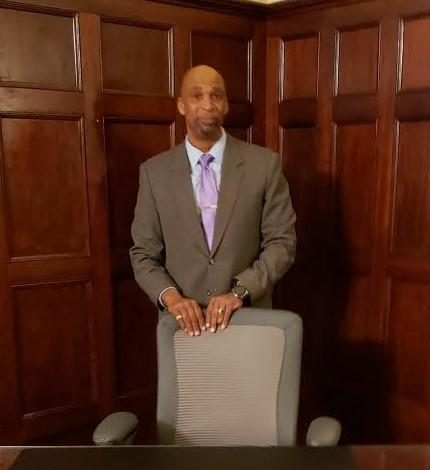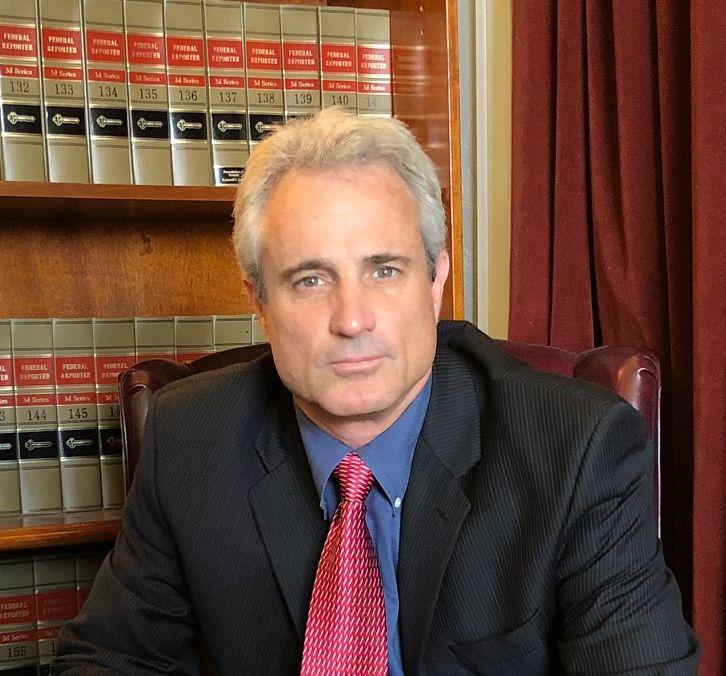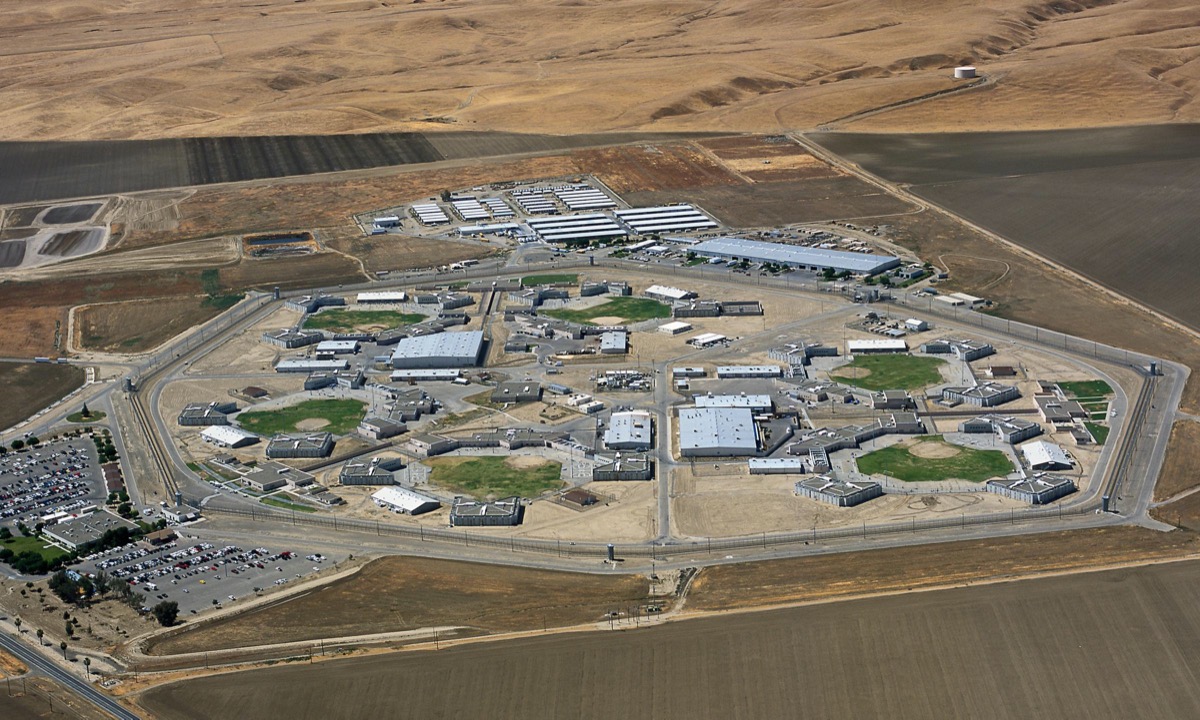Before Facing COVID-19, A California State Prison Struggled With Valley Fever
A decade ago, Avenal State Prison scrambled to contain an outbreak of a deadly fungal disease that former inmates still battle today.
 This article is part of The State of Science, a series featuring science stories from public radio stations across the United States. This story by Kerry Klein originally appeared on KVPR Valley Public Radio in Fresno, California on June 15, 2020.
This article is part of The State of Science, a series featuring science stories from public radio stations across the United States. This story by Kerry Klein originally appeared on KVPR Valley Public Radio in Fresno, California on June 15, 2020.
*Editor’s Note: As of July 30, Avenal State Prison has reported 1,298 cumulative cases among both the incarcerated population and staff. It remains the California state prison with the second highest cumulative caseload. Find the latest numbers here.

Paul Richardson was in prison in Fresno County in the 1990s when he first heard about valley fever, a mysterious fungal disease that could be caught from inhaling spores in airborne dust. He came to learn, however, that his fellow inmates had their own name for it. “We called it ‘instant AIDS,’” he says. “A-I-D-S.”
It hits people like a brick wall. In rare cases, it kills them. “Within 30 days, you lost about 50 pounds,” Richardson says.
Twelve years later, Richardson himself would contract the disease after he’d been transferred to Avenal State Prison in Kings County. The arid land surrounding the sprawling facility is fertile ground for the fungus that causes the disease. Richardson remembers the day he thinks he caught it. “It’s hot, sunny, this is July 2012,” he says, and as he walked outside to breakfast he saw the wind kick up dust devils toward the sky. “They’re spinning and spinning and spinning.”
Within days, Richardson says, food started to lose its flavor. He lost his appetite, then his energy. A correctional officer noticed he’d stopped getting out of bed. “She walks over to me and she pulled the covers back and the whole bed was drenched and I was shaking,” he says. He was suffering night sweats, fevers. He thinks he lost around 60 pounds. He was eventually diagnosed and prescribed antifungal medications, but he still struggles to manage the disease today.
Patrick Wallace also felt the fierce winds on his way to Avenal’s cafeteria. It was late 2011, and eventually, he too stopped eating and getting out of bed. His case was severe enough that he was transferred to a hospital in Bakersfield. “I was in that hospital for 30 days shackled while they gave me shots, pills, whatever they did,” he says. He’d eventually need multiple surgeries on his lymph nodes, where the disease had spread.
Today, health officials with the California Department of Corrections and Rehabilitation are scrambling to contain an outbreak of COVID-19 that has infected more than 700 people among both the incarcerated population and staff. It’s the state prison system’s second highest infection rate. But almost ten years ago, prison officials were containing an outbreak of a different deadly disease. From 2006 to 2012, Richardson and Wallace were among more than 800 men incarcerated at Avenal who contracted valley fever. It was a dramatic spike that also affected nearby Pleasant Valley State Prison in Fresno County. During that same time period, the disease killed 43 inmates statewide.

Wallace and Richardson are black, one of the two ethnic groups especially susceptible to valley fever alongside Filipinos. Because their susceptibility was known long before the outbreak, these men and hundreds of others have sued the state government and officials throughout the prison system for knowingly putting vulnerable inmates in harm’s way. “It trickles down,” Wallace says. “It trickles down to the warden, and everybody that knows that they have that around their prison. And you’re still transporting bodies and putting people at risk.”
Every year, thousands of people in the desert southwest are diagnosed with valley fever, a large portion of them in its namesake San Joaquin Valley. Of those who develop symptoms, milder cases are commonly misdiagnosed as pneumonia or the flu. More severe cases spread beyond the lungs to other parts of the body, requiring long-term treatment and in rare cases resulting in meningitis and death. Unlike COVID-19, the disease is not contagious, but is contracted by breathing spores that grow in arid soil and become dispersed in the air.
During that spike a decade ago, infection rates at Avenal and Pleasant Valley rose to as much as 150 times higher than outside the prison walls.
That’s when San Diego lawyer Ben Pavone started receiving letters. “Back in November 2012, I got a bunch of prison mail. I hadn’t taken a prison case, a civil rights case in about 10 years,” he says. But when a handful of letters from infected prisoners snowballed into hundreds, Pavone took notice. “It was crazy. These letters were so heartfelt in the sense that they were really just mortified, they were overwhelmed that whole swaths of people were getting infected.”

Pavone eventually represented close to 200 inmates, including Richardson and Wallace, in suits against government officials for various allegations including reckless conduct and outright negligence. While imprisoned, Pavone says, “the one thing you get to keep, the one right you have, and there are so few you have left, is you have the right to be incarcerated safely.”
The state did eventually move thousands of black and Filipino inmates out of Valley prisons and into other institutions around the state. But that began in 2013, after the worst of the spike was over, and only after a direct order from the federal government. Thousands of men had already had their lives changed forever.
So far, all the cases have been dismissed—in court, on appeals, and some even denied a hearing by the U.S. Supreme Court. Now, Pavone has elevated his claim to the United Nations as a human rights violation, which is not as far-fetched as it may seem. During World War II, the U.S. government relocated hundreds of German prisoners of war out of Valley military bases out of fear that exposing them to valley fever would violate the Geneva Convention. “They find that it’s inhumane to house them in an area where they could be susceptible to a life-altering disease,” says Patrick Wallace, “but you’re not going to move your American citizens?”
Payouts due to valley fever exposure are not unheard of, either. In 2016, five construction workers won a $12 million settlement from Caltrans for contracting the disease while expanding a culvert in Kern County. The state has fined a handful of construction companies for failing to protect workers from the disease. And at least two men who contracted the disease at Taft Correctional Institution, a federal prison in Kern County, were awarded hundreds of thousands of dollars from the U.S. government.
“I was in that hospital for 30 days shackled while they gave me shots, pills, whatever they did.”
In the case of state prisons, however, courts have argued a little-known provision known as “qualified immunity” protects prison officials from the inmates’ claims. “Justice is a fancy word for people who can afford it,” Wallace says. “If you can’t afford it like me, there is no justice.”
Invest in quality science journalism by making a donation to Science Friday.
Both men believe the real reason they and their fellow inmates keep losing their cases is discrimination against the prison population, and apathy. “Nobody going to care too much about prisoners getting some type of disease,” says Wallace, who was paroled after 23 years for second-degree murder. “A lot of them are like, ‘well shoot, they should’ve never went to prison, and they wouldn’t have to worry about getting those things.’”
Paul Richardson—whose legal name is Joseph Doss—served 24 years for a series of crimes with a firearm. “Society has thought that…all of us deserved to be in prison, so that drowns out the valley fever episode,” he says.
Both men argue, however, that those decades behind bars were the price they paid to society, and that a chronic disease wasn’t included in the bargain.

Today, Wallace and Richardson are free men. Both in their 50s, they’re restarting their lives and boasting about grandkids. Richardson owns a beauty supply store in Los Angeles and Wallace is a substance abuse counselor in San Diego.
As far as they know, the men have steered clear of COVID-19, but they both still wrestle with managing valley fever. Breathing difficulties prevent Richardson from exercising, and Wallace is forced to take regular breaks throughout the day. Both worry the disease could worsen at any time. “I have no energy and I’m constantly tired,” Wallace says. “I don’t know how long I’m going to be doing what I’m doing now.”
They may no longer be in prison, but Wallace feels they’re still serving a life sentence.
Read and listen to the story on KVPR Valley Public Radio. Learn more about valley fever in our feature on Methods, from Science Friday and about COVID-19 in prisons in our State of Science segment.
Kerry Klein is a reporter at Valley Public Radio in Fresno, California.